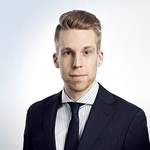Reuse of wastewater is recourse-efficient and contributes to a sustainable society. It also contributes to meeting both international environmental objectives within Agenda 2030 and regional objectives within the EU, as well as Swedish environmental objectives. However, technical developments in this field have advanced further than legal ones. This means that questions often arise of how reuse of waste water should be dealt with within the framework of current legislation. The legal regulation is not an obstacle to the reuse of wastewater, but there are numerous aspects to consider for actors that are planning to reuse wastewater.
Interest in reusing wastewater is growing and in recent years several projects have been started by both municipalities and individual property owners. To illustrate the legal regulation that needs to be taken into account in connection with reuse of waste water, we will use a series of articles, in three parts, to identify and briefly present the central legal issues that operators need to consider.
The first article presented the legal regulation of reuse of wastewater based on the perspective of water and drainage principals, and in the second article based on the individual property owner's perspective. In this concluding article, we focus on the planning and structural engineering questions that are relevant when establishing equipment for reuse of wastewater.
The projects that have been initiated in recent years primarily concern reuse of grey water (bathing, washing up and laundry water), which assumes that the grey water is separated from the black water (toilet water) through separate pipes, so-called source separation sewage systems. Regardless of whether the purification of grey water takes place within an individual property, or on a larger scale in municipal wastewater treatment plants, separate pipes for grey and black water need to be installed. In line with the technical developments for reuse of wastewater, several planning and structural engineering questions have arisen, for example, whether planning permission or obligation to notify is required for wastewater equipment with a separating system within a property, and how a municipality can control the selection of wastewater solutions within a housing area.
THE MUNICIPAL PLANNING MONOPOLY AS POLICY INSTRUMENT
Long-term planning is usually required for municipalities that are planning to establish source separation sewage systems. One tool that the municipalities are utilising is regulating questions regarding wastewater solutions in connection with adoption of detailed development plans. This gives rise to the question of whether municipalities are able to set requirements for specific wastewater solutions in detailed development plans. The municipal planning monopoly means that municipalities have the opportunity to control the use of land and water areas through adoption of detailed development plans or area regulations, see chapter 4, section 1 of the Planning and Building Act (2010:900) (”PBL”). According to chapter 2, sections 1–2 of PBL, when drawing up detailed development plans, the municipality must take both individual and public interests into consideration, and assess the area's suitability in relation to management provisions in chapters 3 and 4 of the Swedish Environmental Code. Areas of land that are requisitioned for urban development in conjunction with planning according to chapter 2, sections 4–5 of PBL must be suitable for the purpose from the point of view of the public with respect to factors including the possibilities to arrange water supply and sewerage. This means that the municipality must ensure that water supply and sewerage can be arranged within the area and specify whether individual or public water and drainage plants shall be used for the relevant area.
The detailed development plan is legally binding and consists of a site plan with associated planning provisions. The measures that must be regulated in the detailed development plan are concomitant on chapter 4, PBL and the regulation is comprehensive. The regulations in chapter 4 set a boundary for what the municipalities must, and respectively may, regulate in a detailed development plan. Further, a prohibition is in place as specified in chapter 8, section 4 a of PBL against introducing special demands and structural engineering requirements that apply in addition to PBL and the Swedish National Board of Housing, Building and Planning's regulations. Neither PBL nor the Swedish National Board of Housing, Building and Planning's regulations state that requirements can be set for source separation sewage systems or reuse of wastewater. A municipality is thus not able to set binding requirements for source separation sewage systems or reuse of wastewater through the detailed development plan.
The detailed development plan is usually accompanied by a plan specification that stipulates the conditions for how the detailed development plan is to be implemented. The plan specification is not legally binding, but the aim of the specification can be significant in interpretation of plan regulations. For example, the municipality has the option of clarifying through the plan specification that a certain area must endeavour to have sustainable wastewater solutions and that technical solutions, such as source separation sewage systems, must be used.
Control through plan specification - current projects
Technical specifications concerning source separation sewage systems have, for example, been stipulated in plan specifications for ongoing projects on Gotland and in Helsingborg. In the district of Visborg in Visby, the plan specification sets out that the wastewater system in the new district must be separated at source, with separation of grey and black water. Further, the municipality has specified that each property needs to be equipped with four connections (grey-, black-, surface- and drinking water) in order to implement the detailed development plan.
A similar project has been implemented in Helsingborg, where the municipality is testing new technical solutions in Oceanhamnen in the new H+ district. The intention of the technical solutions is to develop the supply system towards more sustainable methods, which among other things means that all households and businesses are connected with three separate pipes (grey water, black water and food waste). The plan specification for the area from 2015 sets out that the intention is that a vacuum system for black water should be used and that all toilets should be vacuum toilets and that kitchen waste shredders should be installed, connected to the pipe system in all kitchen areas.
The projects in Visby and Helsingborg illustrate how the plan specification can be used to clarify objectives for sustainable wastewater solutions within adopted plan areas.
CONTROL THROUGH LAV
Besides controlling use of land and water areas, the municipality has a certain possibility to regulate the design and use of a public water and drainage system according to the Public Water Services Act (2006:412) (”LAV”). There is no regulation of which technology is to be used for the public water and drainage services for which the water and drainage principal is responsible. This means that the water and drainage principal can choose which technology is to be used, for example, source separation sewage systems. Besides the regulation in LAV pertaining to property owners' obligations in connection with the use of a public water and drainage system, the municipality has the possibility of issuing additional regulations on the use of the public water and drainage installation (”ABVA”). Through adoption of ABVA, the municipality can consequently control the property owner's use of the public water and drainage installation.
The standard proposal to ABVA from January 2007 produced by Svenskt Vatten does not contain any provision on source separated wastewater solutions. However, Svenskt Vatten is currently working on a new proposal including such a provision. The proposed provision focuses on when the principal establishes separate connection points for grey and black water. According to the proposal, the property owner should be obliged to separate and divert the wastewater before it is supplied to the public water and drainage installation.
REQUIREMENTS FOR PLANNING PERMISSION OR NOTIFICATION FOR THE FACILITY
Besides the fact that source separation sewage systems can be established in a larger context in connection with water and drainage principals' design of public water and drainage plants, it does happen that individual property owners install specific equipment to separate or reuse grey water within a property, before it is discharged or diverted to the public water and drainage installation. The planning and structural engineering aspects mean that the property owner needs to ascertain whether the equipment requires planning permission or is notifiable according to PBL.
The point of departure according to chapter 6, section 5, p. 5 of the Planning and Building Ordinance (2011:338) (”PBF”) is that an installation or significant alteration to equipment for water supply or drainage in a building or within a plot is notifiable. In the event that existing equipment is changed to separate grey and black water, an assessment needs to be made of whether it is the type of significant alteration of the equipment that is notifiable. In our assessment, the point of departure should be that this is a notifiable measure and that a notification should be made to the municipal committee.
If a device for purification of grey water is to be situated in a separate building, the building may also be subject to planning permission. According to chapter 9, section 2 of PBL, the point of departure is that planning permission is required for a new building. The definition of building is to be found in chapter 1, section 4 of PBL and refers among things to a permanent structure consisting of roof or roof and walls that are permanently placed on, or alternatively completely or partially beneath, ground and that have the aim of being constructed in such a way that people can stay therein. In practice, the definition has been interpreted relatively generously. For example, the Land and Environment Court of Appeal considered in case P 116-19, from 20 April 2020, that a pool roof under which people could stay while in the water constituted a building subject to planning permission. In addition, playhouses permanently located on a property have also been considered to be subject to planning permission. Depending on the equipment's design and where it is positioned, planning permission may consequently be required.
However, there is an exception from planning permission for ancillary buildings, such as a store or garage for one and two dwelling buildings, see chapter 9, section 4 a PBL. The exception sets certain requirements on the building's design and only applies if the building, together with other buildings erected with the support of the provision, do not exceed an area of 30 square metres. If the exception is applicable, the measure shall instead be notified according to chapter 6, section 5, p. 10 of PBF. However, a municipality does have the option of determining through the detailed development plan that requirements for planning permission must apply for an ancillary building that is erected in an area that constitutes a valuable environment. Whether the building requires planning permission or not thus needs to be assessed based on the individual case. Concerning equipment that is installed within an existing building, the starting point is that it is not subject to planning permission.
OUTLOOK
Interest in more sustainable solutions for reuse of wastewater is growing and its legal regulation and interpretation has now also started to be developed. As mentioned above, Svenskt Vatten has considered the possibility of establishing source separation sewage systems in its work on a new standard proposal to ABVA. In addition, on 28 October 2021, the Ministry of Finance presented directive 2021:92 Water issues in connection with planning and construction, which aims to investigate regulation of water issues in connection with planning based on PBL.
The investigation will look into how environmental quality standards can have a greater impact on planning and processing according to PBL and which tools the municipalities need to ensure that the requirements for environmentally and economically sustainable solutions for surface and drinking water are achieved. Further, the investigation will review the possibilities to set requirements for water management in view of current and future water shortage. The submission illustrates the fact that the municipalities' opportunities to set requirements for water and drainage solutions that include reuse through PBL are currently limited. One way to resolve the problem could be to ensure requirements are placed on management of water through the detailed development plan in order to safeguard supply of drinking water. The commission will report no later than 15 November 2023. It remains to be seen whether and how the investigation takes source separation sewage systems and reuse of wastewater into account.
CONCLUDING REMARKS
To sum up, several planning and structural engineering issues are highlighted when establishing source separation sewage systems and reuse of wastewater. The legal regulation does not constitute an obstacle to such solutions, but the conditions are restricted. Interest in reusing wastewater is increasing and it is likely that the legal regulation will need to be adapted to society's new requirements, but such an adaptation will take time. Until then, the various actors need to ensure that their objectives, intentions and projects relate to the applicable legislation.
Lindahl is monitoring developments with great interest and takes a positive view of the development towards a sustainable society and resource-efficient use of water. You are welcome to contact us if you have any questions.


